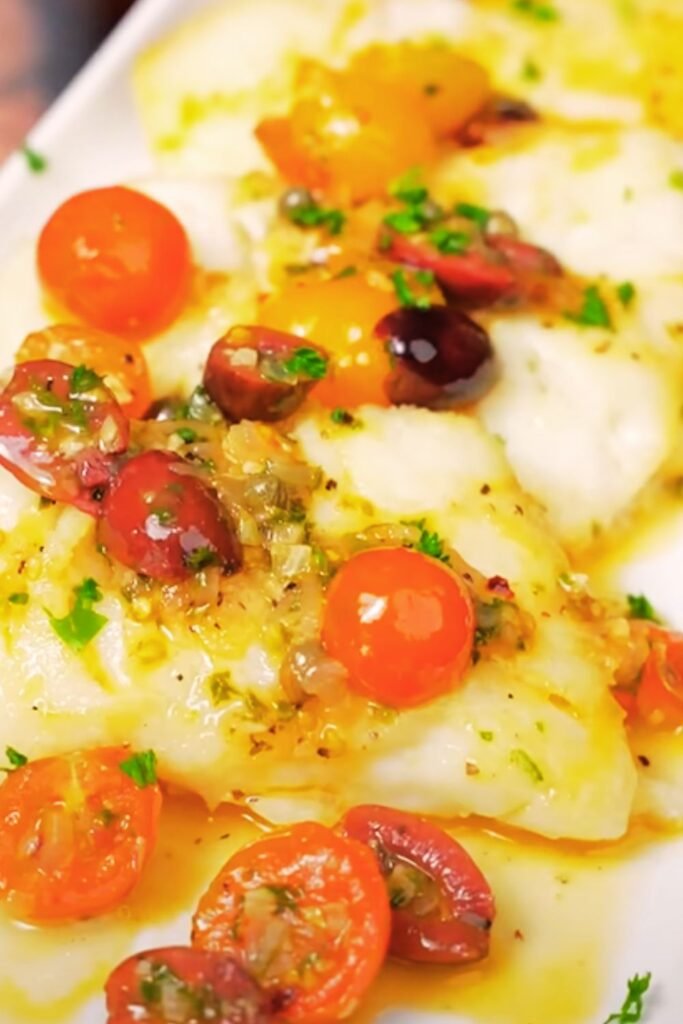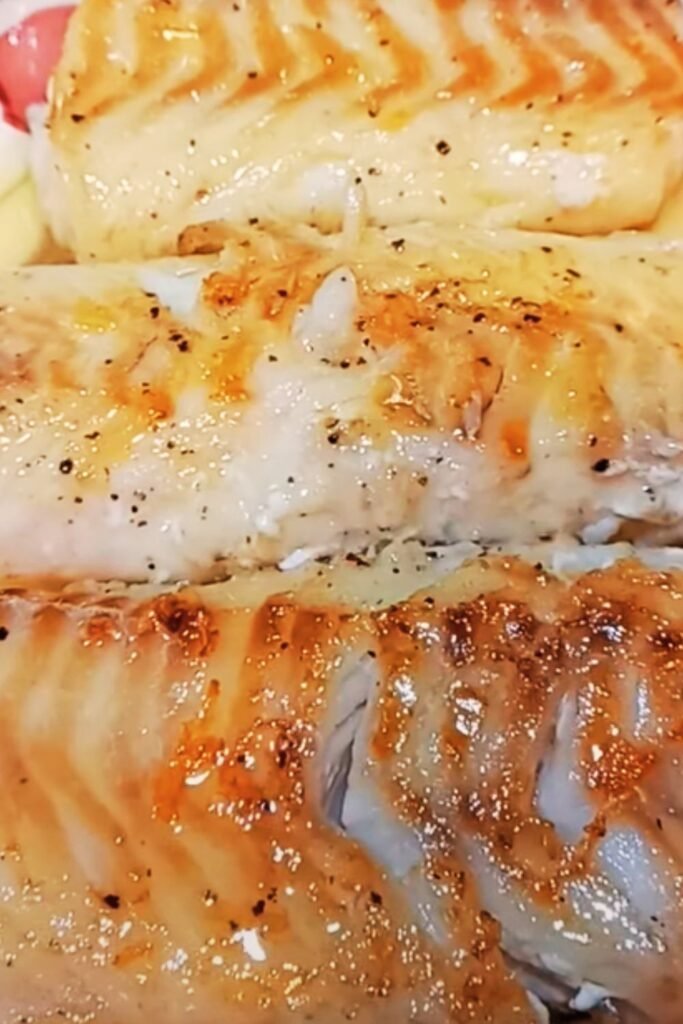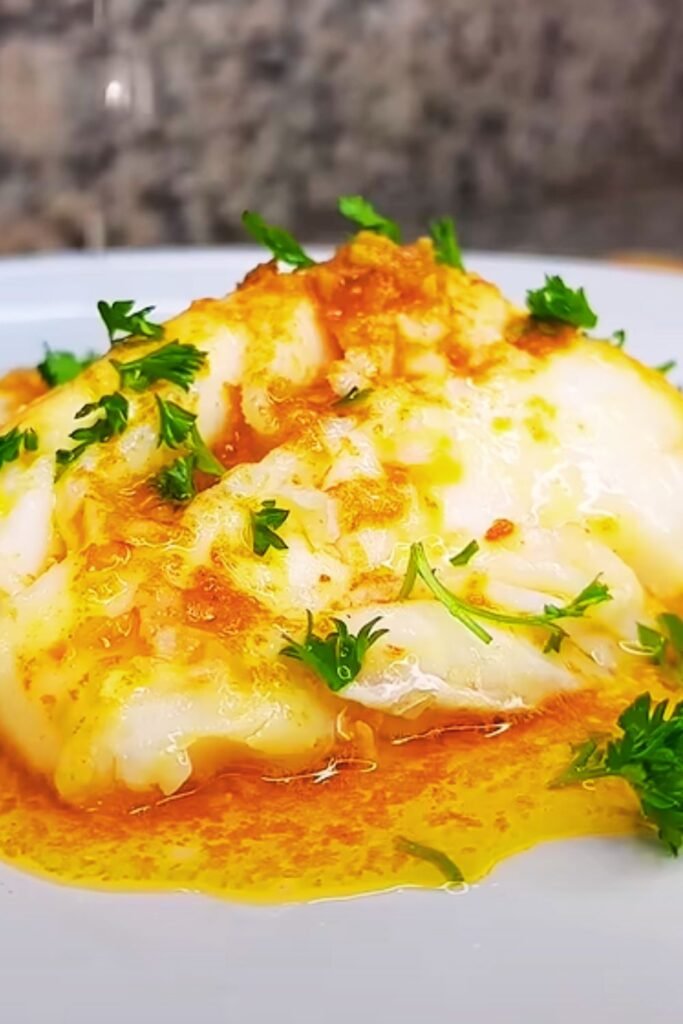There’s something magical about perfectly baked cod that makes my heart sing every time I pull it from the oven. The golden, crispy panko crust gives way to tender, flaky fish underneath, creating a symphony of textures that never fails to impress. I’ve been perfecting this recipe for years, and I’m excited to share not just the main dish, but also the most delightful side dishes that transform this simple fish into a memorable feast.
When I first discovered this panko-crusted approach to baking cod, it revolutionized my weeknight dinners. Gone were the days of bland, overcooked fish that nobody wanted to eat. Instead, I found myself with a foolproof method that delivers restaurant-quality results every single time. The secret lies in the perfect balance of seasonings, the right panko-to-butter ratio, and understanding exactly how long to bake for optimal flakiness.
Understanding Cod: The Foundation of Great Cooking
Atlantic Cod : A mild, white fish with large flakes and minimal fishy taste, making it perfect for those who typically avoid seafood
Pacific Cod : Slightly firmer texture than Atlantic cod, with a sweet, delicate flavor that pairs beautifully with crispy coatings
Fresh vs. Frozen Cod : Fresh cod should smell like the ocean, not fishy, while frozen cod can be just as delicious when properly thawed
Sustainability : Choose cod from well-managed fisheries to support ocean health and ensure future availability
I always recommend asking your fishmonger about the freshest options available. The quality of your cod directly impacts the final result, so it’s worth investing in the best you can find.
The Perfect Panko-Crusted Baked Cod Recipe
My go-to method has never let me down, and I’m confident it won’t let you down either. Here’s what makes this recipe special:
Ingredients for the Main Dish
| Ingredient | Amount | Purpose | Notes |
|---|---|---|---|
| Cod fillets | 4 pieces (6 oz each) | Main protein | Choose uniform thickness |
| Panko breadcrumbs | 1½ cups | Crispy coating | Japanese-style preferred |
| Butter | 4 tablespoons, melted | Binding agent | Unsalted recommended |
| Lemon zest | 2 teaspoons | Bright flavor | Fresh only |
| Garlic powder | 1 teaspoon | Savory depth | Not garlic salt |
| Paprika | 1 teaspoon | Color and mild heat | Sweet paprika works best |
| Fresh parsley | 3 tablespoons, chopped | Freshness and color | Flat-leaf preferred |
| Salt | 1 teaspoon | Seasoning | Kosher or sea salt |
| Black pepper | ½ teaspoon | Spice balance | Freshly ground |
| Olive oil | 2 tablespoons | Pan preparation | Extra virgin |
Step-by-Step Cooking Method
- Preheat and Prepare: Set your oven to 425°F (220°C) and lightly oil a baking dish large enough to hold all fillets without overcrowding
- Season the Fish: Pat cod fillets completely dry with paper towels, then season both sides generously with salt and pepper
- Create the Panko Mixture: In a medium bowl, combine panko breadcrumbs, melted butter, lemon zest, garlic powder, paprika, chopped parsley, and a pinch of salt
- Coat the Fillets: Press the panko mixture firmly onto the top of each cod fillet, creating an even layer that covers the entire surface
- Perfect Baking: Place in preheated oven for 12-15 minutes, or until the fish flakes easily with a fork and the coating is golden brown
- Rest and Serve: Allow to rest for 2-3 minutes before serving to let the juices redistribute

The key to success lies in not overcooking the fish. Cod is done when it reaches an internal temperature of 145°F (63°C) and flakes easily. Overcooking results in dry, tough fish that nobody enjoys.
Spectacular Side Dishes That Complement Baked Cod
I’ve experimented with countless side dishes over the years, and these combinations have become my absolute favorites. Each brings something unique to the table while harmonizing beautifully with the delicate cod.
Roasted Vegetables Medley
Root Vegetable Selection : Carrots, parsnips, and baby potatoes create a hearty, colorful foundation
Seasonal Vegetables : Brussels sprouts, asparagus, or green beans add fresh, crisp textures
Mediterranean Touch : Zucchini, bell peppers, and cherry tomatoes for a lighter, brighter profile
| Vegetable | Prep Time | Roasting Time | Temperature | Seasoning Notes |
|---|---|---|---|---|
| Baby potatoes | 5 minutes | 25-30 minutes | 425°F | Rosemary, garlic, olive oil |
| Carrots | 3 minutes | 20-25 minutes | 425°F | Thyme, honey glaze |
| Brussels sprouts | 5 minutes | 15-20 minutes | 425°F | Balsamic, pancetta optional |
| Asparagus | 2 minutes | 10-12 minutes | 425°F | Lemon, parmesan |
| Bell peppers | 3 minutes | 15-18 minutes | 425°F | Oregano, garlic |
My favorite combination involves tossing halved baby potatoes with olive oil, minced garlic, fresh rosemary, salt, and pepper. I start these in the oven about 15 minutes before the cod goes in, ensuring everything finishes at the same time.
Elegant Rice and Grain Options
Lemon Herb Rice Pilaf : Fragrant basmati rice cooked with chicken broth, finished with fresh herbs and lemon juice
Wild Rice Stuffing : Nutty wild rice mixed with sautéed onions, celery, and dried cranberries for textural interest
Quinoa Tabbouleh : Light, refreshing quinoa salad with tomatoes, cucumber, parsley, and mint
I particularly love preparing a simple rice pilaf that I can start on the stovetop while the oven preheats. The key is using good-quality broth instead of water and adding a bay leaf during cooking for depth of flavor.
Fresh Salad Accompaniments
Nothing brightens a plate of baked cod quite like a well-composed salad. My go-to combinations include:
Classic Garden Salad : Mixed greens, cucumber, cherry tomatoes, and red onion with a light vinaigrette
Mediterranean Cucumber Salad : Sliced cucumbers with red onion, fresh dill, and a yogurt-based dressing
Warm Spinach Salad : Baby spinach wilted with garlic, topped with toasted pine nuts and a squeeze of lemon

Advanced Cooking Techniques and Variations
After mastering the basic recipe, I love experimenting with different flavor profiles and techniques. Here are some variations that have become regular favorites in my kitchen.
International Flavor Profiles
Mediterranean Style : Add dried oregano, sun-dried tomatoes, and olives to the panko mixture
Asian-Inspired : Incorporate sesame seeds, ginger powder, and a touch of soy sauce
Cajun Spiced : Mix in paprika, cayenne, oregano, and thyme for a Southern kick
Herb-Crusted European : Combine fresh tarragon, chives, and dill with the traditional panko base
Cooking Method Variations
| Method | Temperature | Time | Benefits | Considerations |
|---|---|---|---|---|
| High Heat Baking | 450°F | 10-12 minutes | Extra crispy crust | Watch carefully to prevent burning |
| Slow Roasting | 350°F | 18-20 minutes | Even cooking | Less crispy coating |
| Broiler Finish | 425°F + broil | 12 min + 2 min | Golden top | Requires constant attention |
| Convection Baking | 400°F | 10-12 minutes | Even browning | Reduces cooking time |
I find that the convection method produces the most consistently golden results, but traditional baking works perfectly well for most home cooks.
Nutritional Benefits and Health Considerations
Cod represents one of the healthiest protein choices available, and I love knowing that this delicious meal is also incredibly nutritious.
Nutritional Profile Per Serving
| Nutrient | Amount | Daily Value % | Health Benefits |
|---|---|---|---|
| Protein | 32g | 64% | Muscle maintenance, satiety |
| Omega-3 fatty acids | 0.3g | 12% | Heart and brain health |
| Vitamin B12 | 2.4mcg | 100% | Nerve function, energy |
| Phosphorus | 450mg | 45% | Bone health |
| Selenium | 55mcg | 100% | Antioxidant properties |
| Calories | 285 | 14% | Moderate caloric content |
The panko coating adds some carbohydrates and a small amount of healthy fats from the olive oil and butter, making this a well-balanced meal that fits into most dietary approaches.
Dietary Adaptations
Gluten-Free Option : Substitute traditional panko with gluten-free breadcrumbs or crushed rice cereal
Lower Calorie Version : Use cooking spray instead of melted butter, or reduce the amount by half
Keto-Friendly Adaptation : Replace panko with crushed pork rinds or almond flour mixture
Dairy-Free Alternative : Substitute butter with olive oil or coconut oil

Expert Tips for Perfect Results Every Time
Through years of cooking this dish, I’ve learned several crucial techniques that separate good baked cod from absolutely exceptional results.
Fish Selection and Preparation
The foundation of great baked cod starts at the fish counter. I always look for fillets that are firm to the touch, translucent rather than opaque, and smell like fresh ocean air. Avoid any fish with a strong “fishy” odor, dry edges, or discolored patches.
When preparing the fillets at home, I remove any remaining bones with tweezers and trim away any dark portions of the flesh, which can have a stronger flavor that some people find off-putting.
Coating Techniques That Work
Press Firmly: I use my palms to gently but firmly press the panko mixture onto each fillet, ensuring it adheres properly and won’t fall off during baking
Edge Sealing: Pay special attention to coating the edges of the fillets, as these areas are prone to drying out
Even Distribution: Aim for a coating that’s about ¼ inch thick for the perfect balance of crunch and fish
Resting Time: Allow the coated fillets to rest for 5-10 minutes before baking, which helps the coating stick better
Temperature and Timing Mastery
I’ve found that most home cooks either undercook or overcook their fish, both of which result in disappointing meals. The secret lies in understanding that cod continues cooking slightly after removing it from the oven.
I remove the fish when it’s just beginning to flake but still looks slightly translucent in the very center. During the resting period, residual heat finishes the cooking process perfectly.
Seasonal Menu Planning and Pairing Ideas
One of the things I love most about this baked cod recipe is how adaptable it is to different seasons and occasions. I’ve served it at casual family dinners and elegant dinner parties with equal success.
Spring Menu Combinations
Fresh and Light Approach : Pair with asparagus spears, new potatoes, and a mixed green salad with strawberry vinaigrette
Garden-Fresh Focus : Serve alongside sautéed peas with mint, roasted radishes, and a simple arugula salad
Summer Entertaining Ideas
Mediterranean Evening : Combine with grilled zucchini, tomato cucumber salad, and herb-roasted fingerling potatoes
Casual Outdoor Dining : Serve with corn on the cob, three-bean salad, and grilled vegetable skewers
Fall Comfort Combinations
Harvest Celebration : Pair with roasted butternut squash, wild rice pilaf, and sautéed kale with garlic
Cozy Family Dinner : Serve with mashed sweet potatoes, green bean almondine, and warm dinner rolls
Winter Warming Menus
Elegant Cold-Weather Meal : Combine with duchess potatoes, braised carrots, and wilted spinach salad
Hearty Winter Comfort : Pair with creamy polenta, roasted root vegetables, and sautéed Swiss chard
Storage, Reheating, and Meal Prep Strategies
I often prepare components of this meal ahead of time, especially when entertaining or during busy weekdays. Here’s what works best for maintaining quality and flavor.
Make-Ahead Components
| Component | Advance Prep Time | Storage Method | Reheating Instructions |
|---|---|---|---|
| Panko mixture | Up to 3 days | Covered bowl, refrigerated | Use at room temperature |
| Seasoned fillets | 4 hours maximum | Covered, refrigerated | Bring to room temperature |
| Roasted vegetables | 1-2 days | Refrigerated containers | 350°F for 10 minutes |
| Rice pilaf | 3 days | Refrigerated, covered | Microwave with splash of broth |
Leftover Management
Cooked cod keeps well for up to 3 days in the refrigerator, though I find it’s best enjoyed within 24 hours for optimal texture. I never recommend freezing the finished dish, as the delicate fish texture suffers significantly.
For reheating, I place leftover cod in a 300°F oven for about 8-10 minutes, which gently warms it without overcooking. Avoid using the microwave, as it makes the fish rubbery and the coating soggy.
Q&A Section
Q: What’s the best way to ensure my panko coating stays crispy? I’ve found that the key to maintaining crispiness lies in proper moisture control. Always pat the cod fillets completely dry before applying the coating, and avoid covering the dish while baking. If you notice the coating browning too quickly, tent loosely with foil for the last few minutes of cooking.
Q: Can I use frozen cod fillets for this recipe? Absolutely! I use frozen cod regularly with excellent results. The crucial step is proper thawing – I place frozen fillets in the refrigerator overnight, then pat them thoroughly dry before seasoning. Never thaw cod at room temperature or in warm water, as this affects the texture.
Q: How do I know when the cod is perfectly cooked? I look for three indicators: the fish flakes easily when tested with a fork, the internal temperature reaches 145°F, and the flesh has changed from translucent to opaque white. The cooking time varies based on thickness, so I always test the thickest part of the fillet.
Q: What can I substitute for panko breadcrumbs? Regular breadcrumbs work, though they won’t be quite as crispy. I’ve also had success with crushed cornflakes, crushed crackers, or even finely chopped nuts for a different flavor profile. For gluten-free options, almond flour mixed with grated parmesan creates a delicious coating.
Q: Why does my fish sometimes turn out dry? Overcooking is the most common culprit for dry cod. I recommend checking your oven temperature with a thermometer, as many ovens run hot. Also, avoid baking cod directly from the refrigerator – let it come to room temperature for about 15 minutes before cooking.
Q: Can I prepare the entire dish ahead of time? While I don’t recommend assembling the dish too far in advance, you can coat the fillets up to 4 hours ahead and refrigerate them. The vegetables can be prepped and even partially roasted earlier in the day. I bring everything to room temperature before the final baking.
Q: What wine pairs well with this dish? I find that crisp white wines complement the delicate cod beautifully. Sauvignon Blanc, Pinot Grigio, or a light Chardonnay all work wonderfully. For those who prefer non-alcoholic options, sparkling water with lemon or a light herb tea creates a refreshing pairing.
Q: How can I make this recipe more budget-friendly? Cod can be expensive, but I’ve found that buying in bulk when it’s on sale and freezing portions works well. You can also substitute with other white fish like haddock or pollock. Making your own breadcrumbs from day-old bread is another cost-saving measure.
Q: Is this recipe suitable for children? This has become one of my most successful dishes for introducing children to fish. The mild flavor of cod combined with the crispy, golden coating appeals to young palates. I sometimes reduce the garlic and pepper slightly for very young eaters.
Q: Can I double the recipe for a larger crowd? I regularly double or even triple this recipe for entertaining. The key is using multiple baking dishes to avoid overcrowding, which leads to uneven cooking. I also rotate the pans halfway through baking to ensure even browning across all fillets.
This panko-crusted baked cod has become more than just a recipe in my kitchen – it’s a reliable foundation for countless memorable meals. Whether I’m cooking for my family on a busy Tuesday night or preparing an elegant dinner for guests, this dish never fails to deliver both in flavor and presentation. The combination of perfectly seasoned, crispy-coated fish with thoughtfully chosen side dishes creates a dining experience that feels both comforting and sophisticated.
I encourage you to make this recipe your own by experimenting with different herbs, spices, and side dish combinations. The basic technique is foolproof, but there’s plenty of room for creativity and personal touches that reflect your own taste preferences and seasonal ingredient availability.